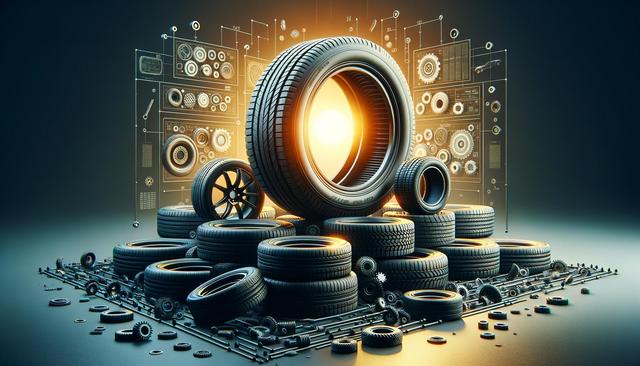Understanding the Demands of Worksite Tires
From construction zones to industrial warehouses, the tires used in work environments face conditions far more extreme than regular road use. These tires must endure heavy loads, rough terrain, and long hours of continuous operation. It’s not just about getting from point A to B; for workers, tire performance can directly impact productivity and safety. Therefore, selecting the right tire for the job is an essential part of operational planning.
The development of tires for work environments prioritizes several key features:
- High load-bearing capacity
- Resistance to punctures and abrasions
- Enhanced traction on uneven or slippery surfaces
- Longer tread life for reduced replacement frequency
When tires are optimized for these conditions, they help reduce downtime due to failures and contribute to smoother, safer workflow. This reliability is especially important for workers who depend on their equipment to meet tight schedules and performance expectations.
Innovative Materials and Tread Design
Advancements in tire technology have introduced materials and design elements that significantly enhance durability and performance. Modern worksite tires utilize reinforced rubber compounds and steel belts to increase resistance against wear and tear. Additionally, the tread design is tailored to specific work environments, whether it’s gravel, mud, or concrete.
Some of the standout innovations include:
- Self-cleaning treads for improved traction
- Cut- and chip-resistant compounds
- Sidewall reinforcements for added durability
These enhancements ensure that the tires maintain optimal grip and performance, even under strenuous conditions. Tire manufacturers are also integrating advanced testing methods to simulate real-world job site stresses, ensuring their products can meet the specific challenges faced by workers in the field.
Safety Through Tire Technology
Worker safety is a priority in any high-risk environment, and tire reliability plays a pivotal role in minimizing hazards. A tire failure on a loaded truck or heavy machinery can lead to serious accidents, costly delays, and even injuries. Modern tire technologies now include features aimed specifically at improving safety while reducing the risk of tire-related incidents.
Some safety-oriented innovations include:
- Built-in pressure monitoring systems
- Heat-resistant compounds to prevent blowouts
- High-visibility sidewall markings for easier inspection
Regular maintenance combined with these technologies empowers workers and fleet managers to identify potential issues before they escalate. This proactive approach not only improves safety but also extends the operational lifespan of each tire, making it a sound investment in the long term.
Efficiency and Worker Productivity
Efficiency on the job site relies heavily on equipment that performs consistently. Tires that require frequent maintenance or replacements hinder workflow and can lead to costly downtime. By choosing tires engineered for high performance in demanding conditions, businesses can enhance overall productivity and reduce operational disruptions.
Key contributors to efficiency in tire design include:
- Low rolling resistance for improved fuel economy
- Optimized tread patterns for smoother rides
- Multi-surface adaptability to reduce tire changes
These features play a crucial role in reducing machine stress and operator fatigue. When workers can trust their equipment to perform reliably, they can focus more on the task at hand, contributing to greater job satisfaction and output.
Choosing the Right Tire for the Job
With a wide array of options available, selecting the right tire involves evaluating the specific demands of your work environment. Factors such as terrain, load weight, temperature conditions, and average usage hours should all influence the decision-making process. Consulting with tire specialists and reviewing product specifications can help ensure that the chosen tire aligns with operational needs.
When evaluating tires, consider the following:
- Durability ratings and field-test performance
- Support and warranty coverage from the manufacturer
- Compatibility with existing equipment
Investing in tires designed for worker support not only enhances safety and reliability but also promotes long-term cost savings. High-quality tires reduce the frequency of replacements and contribute to fewer work stoppages, making them a valuable asset to any team operating in challenging environments.
Conclusion: Empowering Workers Through Tire Innovation
Tires may not always be the first consideration when thinking about workplace efficiency and safety, but they are a foundational component of both. By leveraging innovative tire technologies, businesses can support their workforce with equipment that performs reliably under pressure. From enhanced durability and safety to improved productivity, the right tire choices contribute significantly to a well-functioning, secure, and efficient work environment. For workers who rely on their tools every day, having dependable tires is not just a convenience—it’s a necessity.








